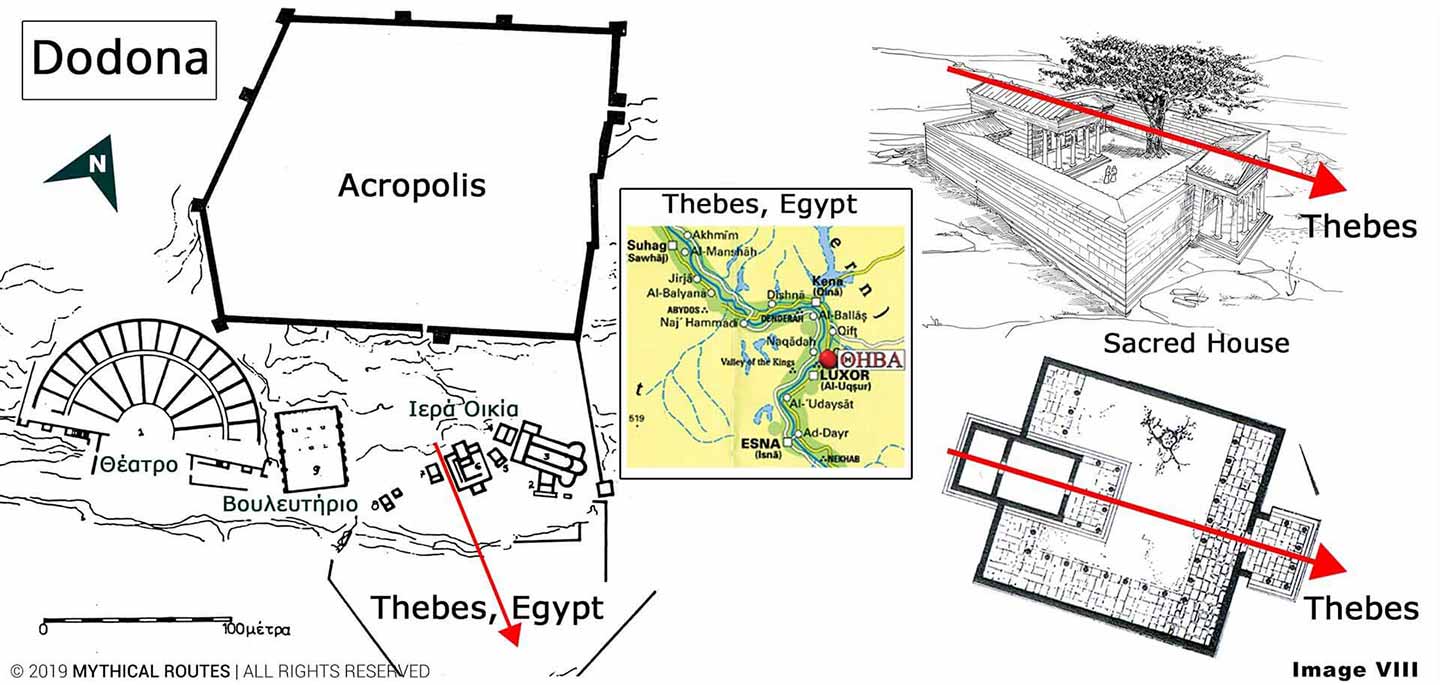
Dodoni (Greek: Δωδώνη) is a village and a municipality in the Ioannina regional unit, Epirus, Greece. Dodona (Doric Greek: Δωδώνα, Dōdṓna, Ionic and Attic Greek: Δωδώνη, Dōdṓnē) in Epirus is the archeological site of the Hellenic oracle. It is the most ancient oracle of Greece and it is associated with the oracle of Zeus Ammon of Libya. According to tradition, two doves departed from Thebes of Egypt and sat in the places, where the shrines of Zeus Ammon in Libya and Pelasgic Zeus in Dodona were founded. It is a relation that Alexander the Great knew too well, when, in 331 B.C., he visited the oracle of Libya, which architecturally resembles the Necromanteion; in fact, it seems that it also operated in a similar way. The most important sanctuary in Dodona, around which the site was religiously formed, is the temple of Zeus "Hiera Oikia" (Sacred House), which is oriented to the southeast of the site. If we draw a straight line in the same direction, we will find out that it will lead us to Thebes of Egypt, passing over the Cave of Zeus of Crete. So the above myth is structurally confirmed. Namely the architect of the temple took under consideration the religious dependence of the sacred site in Thebes.
King Pyrrhus was the one who promoted the worship of Zeus, who embellished the site of Dodona, rebuilding it and creating new buildings, like the Bouleuterion, the Prytaneion, and the Theater. Thus Dodona became the seat of power of the Epirote League. Dodonaios Zeus expanded to the colonies of Sicily and Southern Italy during the campaign of Pyrrhus, who undefeated, but also with many casualties in his army, reached the outskirts of Rome, leading 25.500 infantrymen, 3.000 horsemen, and 20 elephants.

In the above image, we can see a theater of 17.000 seats, which was built at the beginning of the 3rd century during the reign of Pyrrhus (316-272 B.C.) who came into power in 297 B.C., at the age of 20 years. Through said construction, anyone can ascertain the high educational level of the residents of the area, in the most mountainous and most scarcely populated region of Greece, but also the high level of the leader of the region, who desired the upgrade it, despite his young age.
Starting from Ambracia (Arta), the believer, given his good physical condition, would travel on foot the 75 kilometers of poor road in 15 hours to reach the Oracle. Watching then the theatrical play, he should be well versed in Mythology, but also have deep knowledge and understanding of the events transpiring in the Greek region.
Zeus of Dodona originating, as we noted, axially from Crete as a god wielding the double Axe, is of chthonic character, namely he is the God of Nature's Rebirth, who dies every year in the winter and is reborn in the springtime. The cult of nature's rebirth and of "tree-worship", formerly passed from the Minoans to the Myceneans, who also adopted, among other symbols, the double ax (labrys). It is in Dodona then, where pottery of Minoan origin was found, that Zeus of the first Greek tribes in 2000 B.C. comes to be united with the chthonic goddess of vegetation Dione, the worship of whom, preexisted since the Bronze age (2600-1900 B.C.). The clergy of the divine couple were the Selloi, who slept on the ground and did not wash their feet to be able to come into contact with "Gaia" and draw their soothsaying powers from her. Based on the above, we can assume that the celebration must have taken place during the month Mounichion (April – May), when the zodiac of Taurus, which symbolized Zeus after his transformation to grab Europe from Tyre to carry her to Crete, appeared in the sky. Furthermore from this union, besides Minos, Sarpedon, Radamanthus, and Carnus, Dodon was also born.